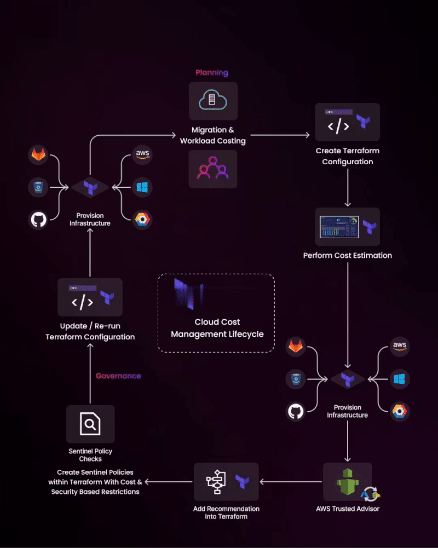Implementing FinOps Maturity Model with Terraform: Empowering Engineers for Cloud Cost Optimization
Cloud cost optimization is crucial for every team member involved in cloud operations, including engineers. Terraform, a popular Infrastructure as Code (IaC) tool, can play a pivotal role in automating cloud cost optimization processes and empowering engineers to contribute effectively to FinOps practices.
Understanding the Challenge
A recent survey of FinOps practitioners highlighted that 40% of respondents identified difficulties in getting engineers to act on cost optimization recommendations as their primary challenge. Engineers may wonder about the relevance of cloud cost optimization to their roles, assuming it falls solely within the domain of finance. However, cloud cost optimization is a collective responsibility, with engineers playing a crucial role.
Terraform’s Role in Cloud Cost Optimization
Terraform serves as a powerful tool for automating cloud cost optimization processes. Here’s how it can help engineers at each stage of the FinOps Maturity Model:
Planning
Terraform provides engineers with a comprehensive view of their cloud infrastructure, enabling them to identify potential areas for optimization with clarity and precision.
Optimization
By leveraging Terraform, engineers can automate the identification and implementation of cost-saving opportunities. This includes actions like deprovisioning unused resources and scaling down underutilized services.
Governance
Terraform allows engineers to enforce cost policies effectively. They can ensure that resources are configured cost-effectively and prevent unauthorized provisioning of new resources through policy enforcement.
Steps to Optimize Cloud Costs with Terraform
1.Identify Workloads: Determine the workloads migrating to the cloud.
- Define Terraform Configuration: Create Terraform configuration files defining required cloud resources.
- Estimate Costs: Execute a `terraform plan` to estimate the cost of defined resources.
- Provision Resources: Utilize Terraform to provision cloud resources.
- Generate Recommendations: Leverage native cloud tools to generate optimization recommendations.
- Integrate Recommendations: Incorporate optimization recommendations into Terraform configuration files.
- Investigate Recommendations: Analyze recommendations to ensure safety and effectiveness.
- Implement Recommendations: Apply optimization recommendations to Terraform configuration files.
- Confirm Changes: Run a `terraform plan` to confirm changes.
- Apply Changes: Execute Terraform to apply changes to cloud resources.
By following these steps and leveraging Terraform’s capabilities, engineers can actively contribute to cloud cost optimization efforts, ensuring efficient resource utilization and cost savings across cloud environments.
Incorporating Terraform into the FinOps Maturity Model not only enhances cost optimization practices but also fosters collaboration between finance and engineering teams, driving organizational success in cloud operations.
Keep visiting QuickShare and write to us in the comments below.

